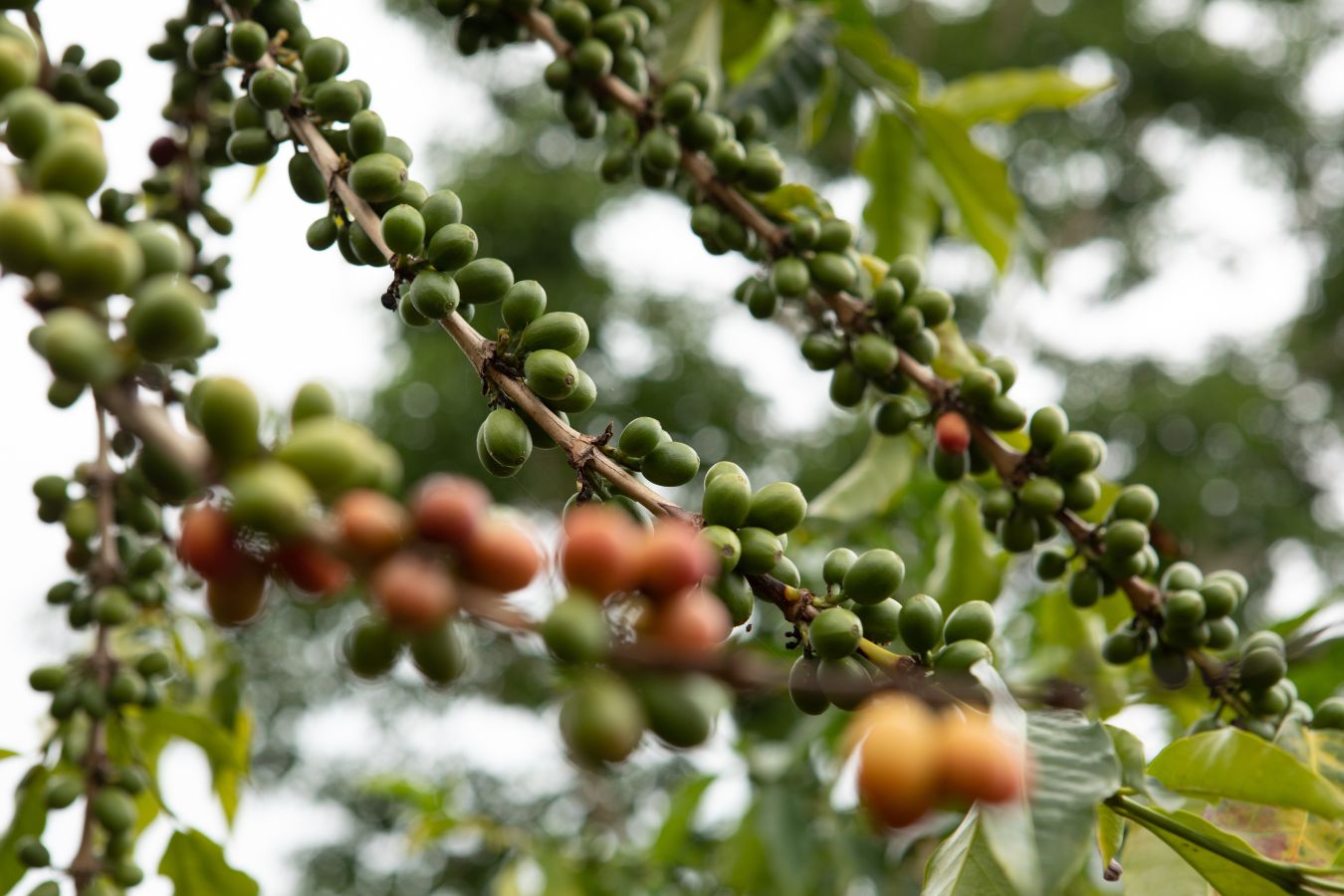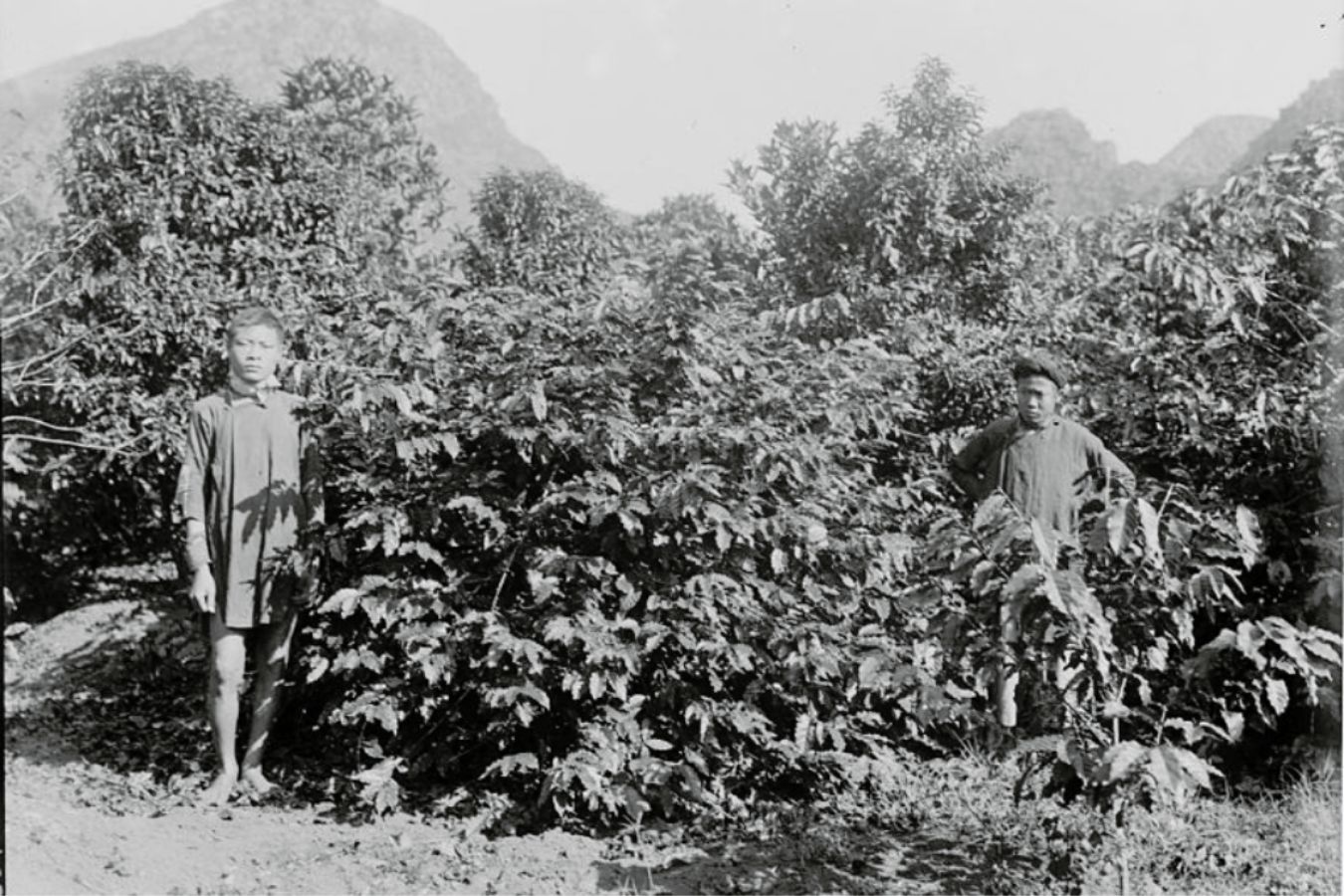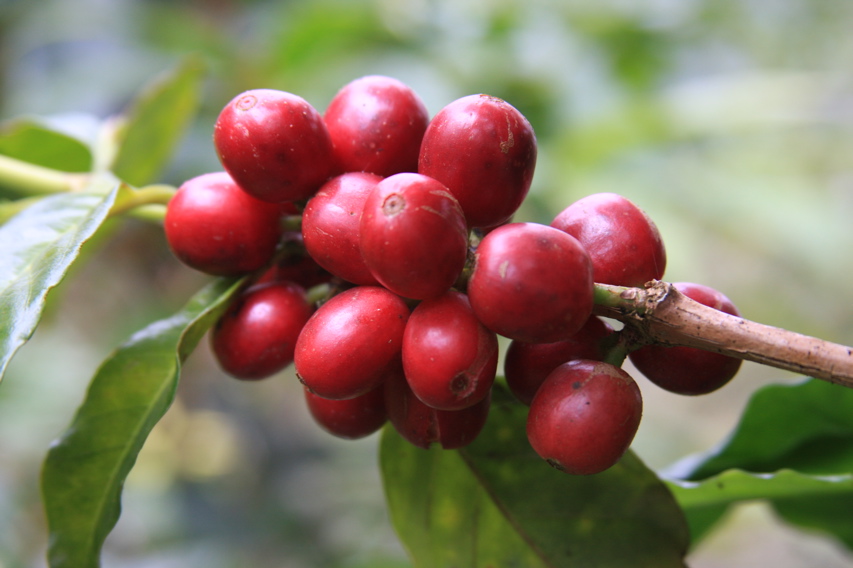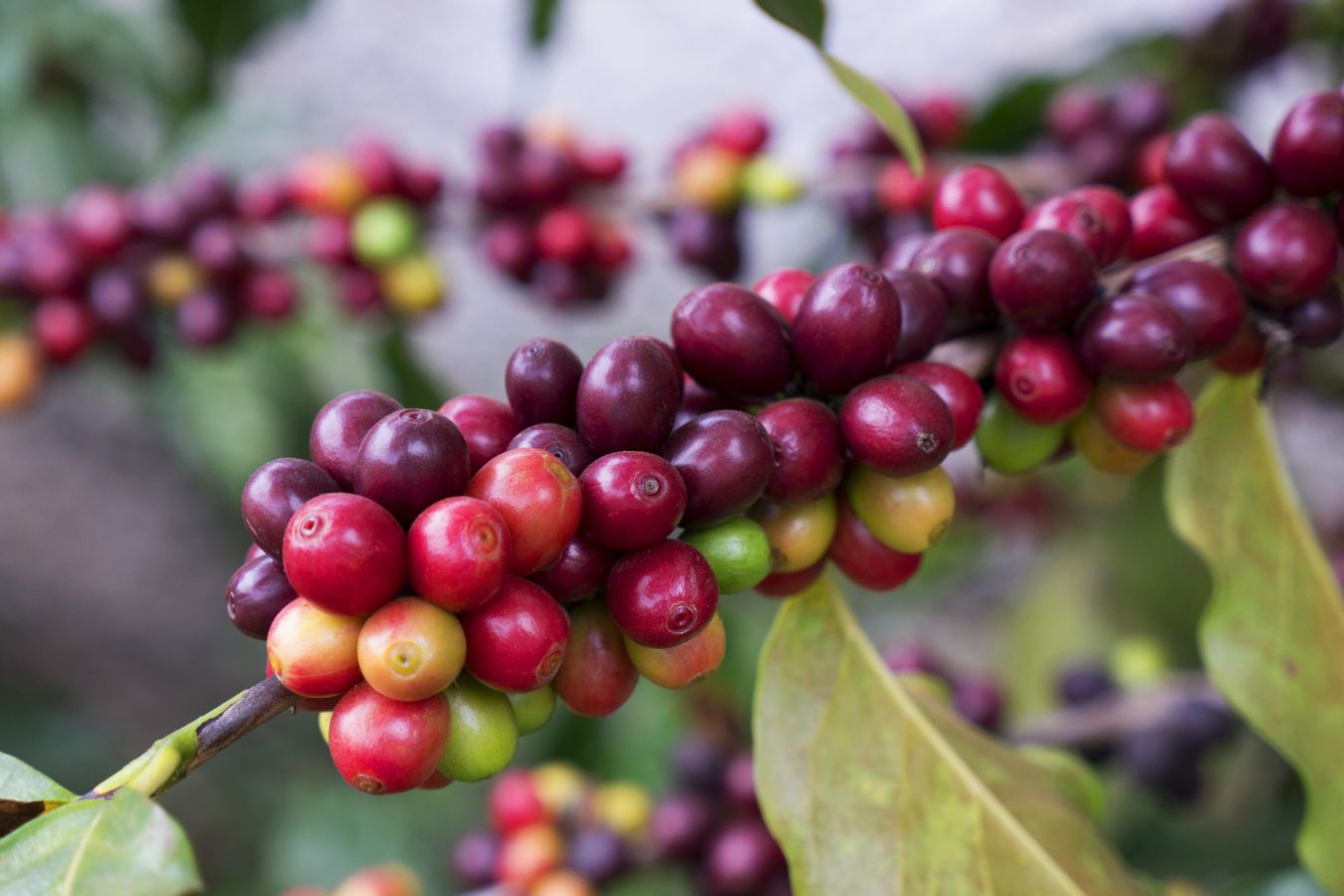
I. The history of Vietnamese
Coffee In 1857, the French introduced coffee to Vietnam. Coffee was cultivated in various northern provinces in the early 1900s, including Tuyen Quang, Lang Son, and Ninh Binh. Tea and coffee are also grown in the central area, particularly in Nghe An and Ha Tinh provinces.
Although tea coffee originated in Vietnam (specialty green coffee), several jackfruit coffee gardens (C.Excelsa) were established simultaneously. The French started producing coffee gardens on the territory of the Central Highlands not long after that.
Tea and coffee were first cultivated in the Central Highlands. Tea coffee plants suffer from a rust disease that is too severe to deteriorate gradually as they grow and develop. Finally, C.green robusta coffee and Jackfruit coffee were chosen to replace tea coffee.
Vietnam’s coffee output increased in the 1990s, mainly due to: – The implementation of a land program for growers.
In 1994 and 1996-1998, coffee prices increased. As a result of the settlement program, many delta residents have relocated to the Central Highlands to live and work as coffee farmers.
The Central Highlands area is known for its large-scale coffee growing. During this time, Robusta coffee was planted in most new coffee gardens. Dak Lak province has become Vietnam’s most fantastic coffee-producing province, with about half of the country’s total coffee output coming from the section. Because of this, Dak Lak coffee is known for its quantity rather than its quality. After being split into Dak Nong, the region was limited, yet it still held the top spot in robusta.
II Production. Coffee beans are popular in Vietnam
1. Arabica coffee beans: Catimor, Typica, Bourbon, Catuai – Vietnam Green Coffee Beans
In Vietnam, arabica coffee bean strains such as Bourbon, Typica, and Mocha (Moka) – the world’s oldest coffee strains – are delicious. However, owing to their poor yields and pest vulnerability, all three themes were eventually phased out of the coffee fields and replaced by the Catimor strain, which was created in Portugal in 1959 and is a crossbreeding of caturra and Timor (Timor is a hybrid of robusta and coffee beans specialty).

This variety is simple to cultivate, produces many fruits, and is pest resistant. Catimor is now extensively farmed in Vietnam’s most critical coffee raw materials areas, including Lam Dong, Dak Lak, Dak Nong, Quang Tri, Nghe An, and Son La.
Three years ago, in Cau Dat, Xuan Truong, and Da Lat, the “Moka” variety was cultivated. This coffee is tasty and well-known, and roasters could utilize it to promote their roasted goods.
a. Typica
According to Mr. Vo Khanh, who buys and processes old-fashioned coffee in Cau Dat village, Xuan Truong commune, the current production of Typica in Cau Dat (district), which includes two Xuan Truong communes an onion station, is about 2.5-3 tons of people per year.
Only Typica and Bourbon were available in this region before 1988. (also known as willow trees). Other coffee kinds, such as Catimor and Catuai (yellow fruit), were introduced to the region in the 1990s.

Still, it wasn’t until 2001, when the price of coffee was at an all-time low, that locals started chopping down typical trees en masse to plant Catimor. Typica is marketed combined with Catimor for export without categorization, so people cut them down and replace them with Catimor cultivars 2-3 times more productive than Typica.
Catimor has made its way throughout the globe, but only as a coffee exported and mixed with other coffees. Meanwhile, Typica is losing ground and no longer possesses a location called “Moka Earth Bridge.”
b. Bourbon
Arabica Bourbon, also known as Moka coffee or Moka Oil, is the most precious coffee type in Vietnam and has the same flavor quality as the most excellent coffee in the world. Arabica Bourbon (Moka) originates from the Yemeni port of Mocha, which was formerly renowned.
Moka was brought to Bourbon Island (now Reunion), a tiny French island approximately 700 kilometers east of Madagascar and 200 kilometers southwest of Mauritius in the Indian Ocean. The French brought this variety of Arabica Bourbon to Vietnam in 1875. To produce Moka, the French established multiple coffee estates.
After Moka was collected and processed, it was released on the market under the name “Arabica du Tonkin,” which echoed once, becoming immensely renowned for its deliciousness and luxury, solely enjoyed by the upper class and nobility.

The outstanding Moka coffee produced in Vietnam, “Arabica du Tonkin”, is extensively transported to France to offer people who appreciate the trend. The seeds have a moderate sour flavor and a wine-like aroma, with a sweet aftertaste. Bourbon from higher elevations often has flowery aromas. For a long time, Moka Oil has been farmed and thrived in Xuan Tho commune and Xuan Truong commune.
Because of its enticing scent and balanced, smooth-smooth, nostalgic flavor, Moka Cau Dat is known as the queen of coffee. Unfortunately, many farmers do not desire to maintain Arabica Bourbon variants due to the effect of the market economy, so when they find catimor kinds are incredibly productive, simple to cultivate, and offer many economic rewards, they plant them after chopping down a lot of Moka trees. Currently, despite several efforts to revive this valuable coffee variety, Moka is still very scarce, and as a result, coffee prices are pretty high.
c. Catuai
Catuai is a 1940s cross between the Caturra coffee line (named after a Brazilian town) and the Mundo Novo coffee line (pure Arabica) (a hybrid line between two pure arabica coffee bean lines, Bourbon and Typica).
Catuai was brought into Vietnam from Cuba in the 1980s together with Catimor coffee cultivated in the Phu Quy region, Nghe An, and afterward placed the variety into further growth in the Quang Tri area, according to several coffee beans green manufacturers since the country’s freedom.
Catuai has strong production but weak pest resistance, salt mist resistance, and other traits, presumably owing to genetic features from Caturra, which is noted for its poor antibodies. As a result, Catuai has not evolved further; only a few gardens remain, although the red coffee Catimor in the garden is still relatively high. Catimor is used to gather and sell items.
Catuai resembles Catimor but blossoms and harvests roughly two weeks later than Catimor in Quang Tri. The ripe Golden Catuai, unlike the red catimor, is yellow. The bulk of the nucleus has a spherical form, similar to the Catimor kernel; however, lengthy particles appear higher than Catimor. That might be because the diversity of catuai gardens in the region is no longer uniform.
2. Green robusta coffee – Vietnam Green Coffee Beans/ Coffee Beans Roasted
The most excellent Robusta green coffee beans in Vietnam in the Central Highlands come from various gardens throughout the provinces. Like Robusta Vietnam’s coffee in Dak Lak Province, there is coffee in Buon Ho, and Dak Nong province has delicious coffee is grown in Dak Mil, Dak Ha delicious Robusta coffee in Kon Tum province, Gia Lai province has Se Se, Lam Dong province has Di Linh Tuy is also Robusta coffee.
Still, each land brings its distinct flavor, very delicate and superior to other lands. Areas like Binh Duong, Binh Phuoc, Dong Nai, and others may be found in the lower geography to the south and southeast. It also supplies a significant amount of Robusta Vietnamese coffee, although the quality is not as good as Highland Robusta Vietnamese green coffee beans.

Robusta is divided into two lines:
a. Robusta Sparrow: Robusta Sparrow is a pure root variety that produces a higher grade than the high-yield line. Although the seeds are tiny, they are robust and hefty.
b. Robusta coffee beans high yield: The Central Highlands Institute of Agro-Forestry Science and Technology chose this line for asexual breeding using the grafting technique in the coffee tree re-cultivation program, which includes several primary varieties: TR4; TR5; TR6; TR7; TR8; TR9; TR11; TR12; TR13; TR14; TR15; TR16; TR17; TR18; TR19; TR20; TR21; TR22; TR23; TR24; TR25; TR26 The high-yield line is used to extract chlorogenic acid (CGA), an antioxidant that helps preserve neurons and is a chemical that prevents hypoxia. It has a high yield and yield, decent insect resistance, but not as good quality as the Robusta Vietnamese coffee beans Sparrow line. Alternatively, make the coffee soluble.
3. Cherry Coffee – Vietnam Green Coffee Beans/ Coffee beans green
Liberica and Exelsa, sometimes known as jackfruit coffee, are primary.
The production of jackfruit coffee is low, but the kernel is huge and white with a long elongated shape. Trees are frequently planted in rows with a space of 5-7 meters between trees, either as single species or as windscreen forest belts for coffee plantations.
Jackfruit coffee is currently a rootstock for other coffees that are highly popular with gardeners due to its drought-tolerant qualities and strong insect resistance.
When roasted, jackfruit coffee beans are often blended with coffee products, drink tea coffee, and other spices to produce a unique flavor.